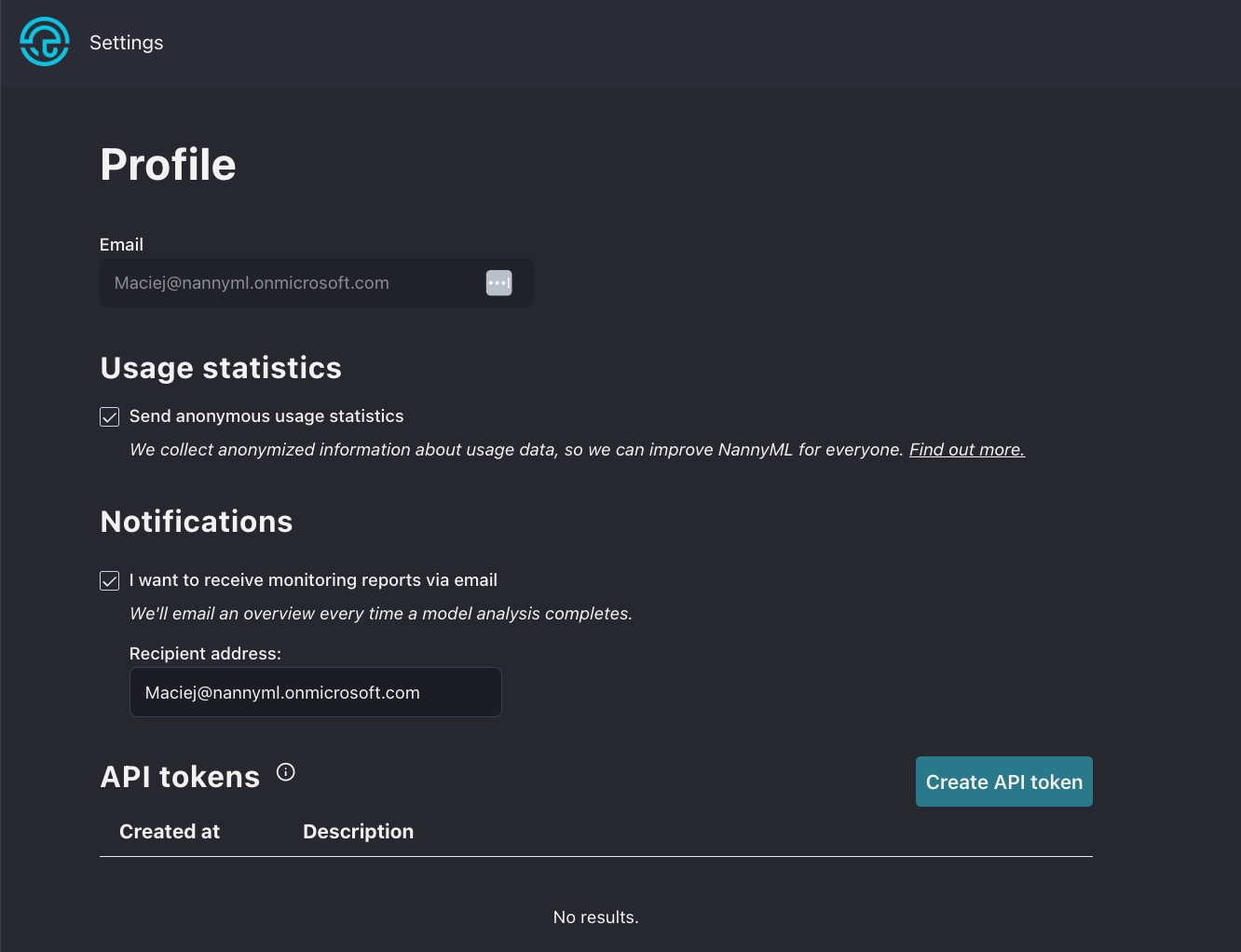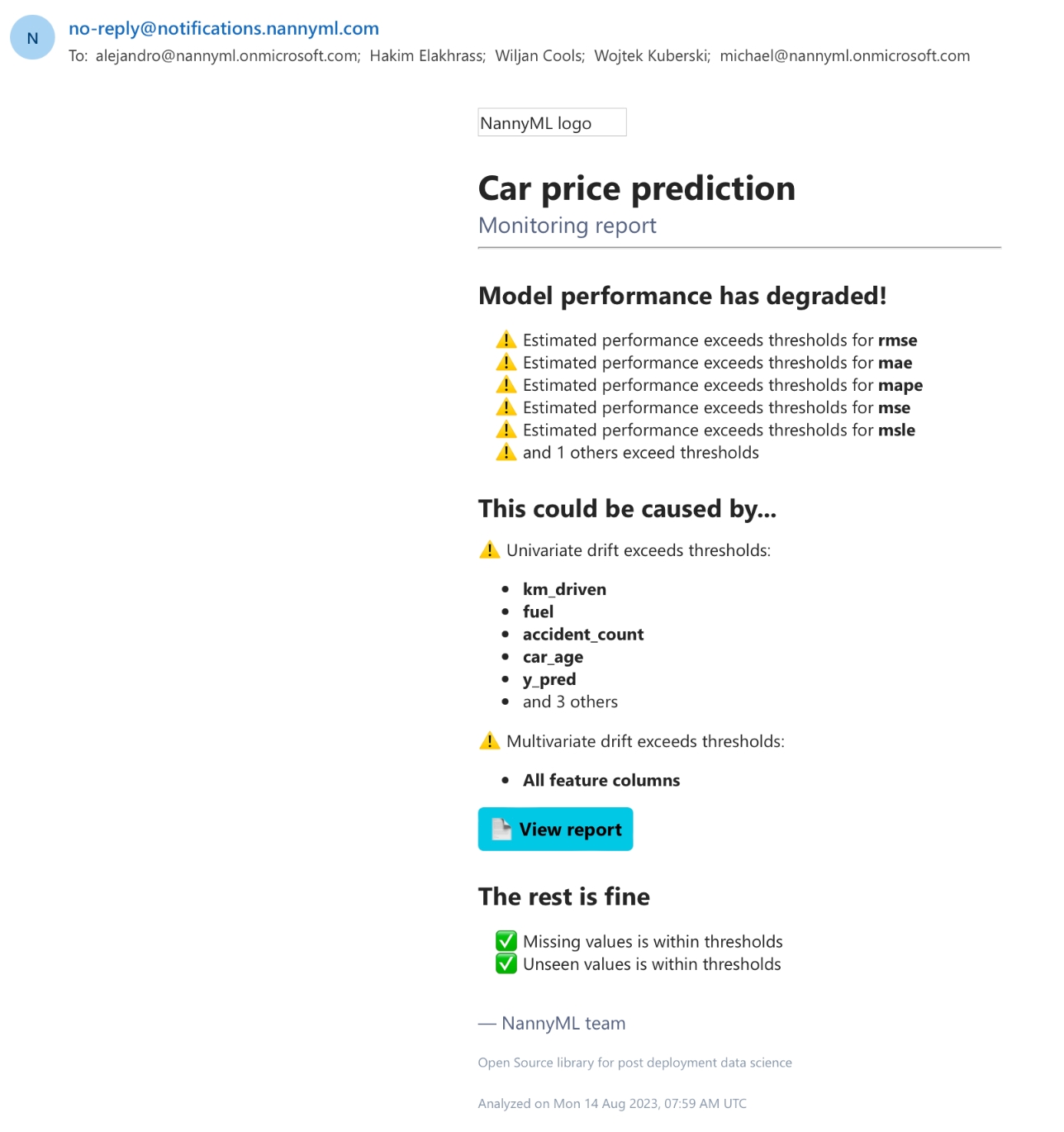Account settings
In account settings, you can opt out of anonymous usage statistics or set up a notifications system via email with reports. The API token section lets you create a token to authenticate when using nannyML Cloud SDK.

Notifications - alerting report
Suppose there are any significant alerts on the last chunk. In that case, NannyML will send an automated email to your email account with some of the main insights: the performance metrics that have dropped and the potential causes of it.
All are linked to the respective dashboards with a full view of the features and metrics with issues.

Danger zone: configure application
In the danger zone you'll find a link to the application setup wizard. It will walk you through the configuration of authentication and notifications of your NannyML Cloud instance. A misconfiguration here might make your instance unavailable for other users, so treat this with care.